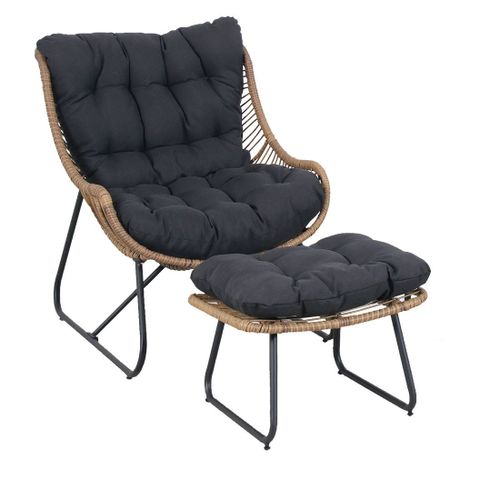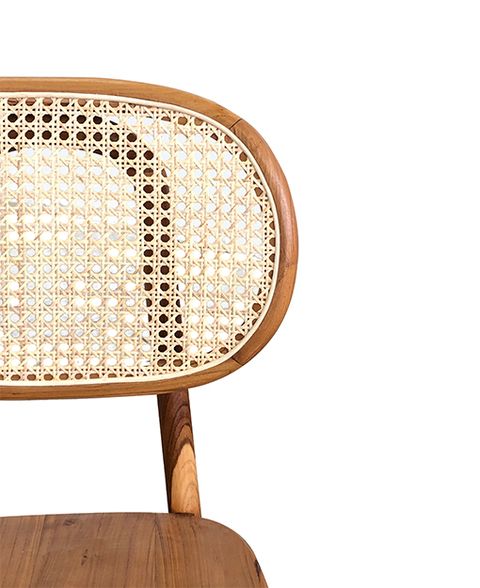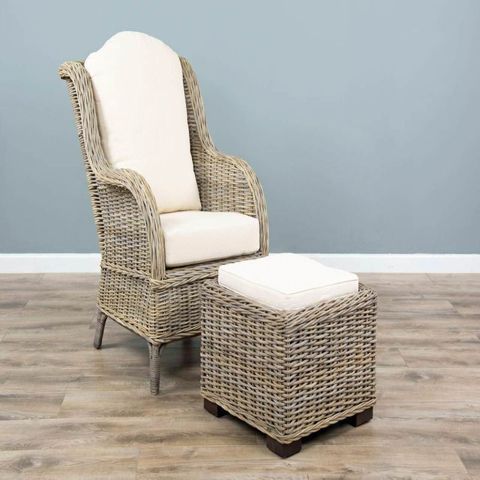There’s something magical about settling into a well-crafted traditional armchair and footstool set. These pieces don’t just sit in a room – they become the beating heart of comfort, warmth, and relaxation. Think about the last time you found yourself perfectly positioned in a cozy chair with your feet up on a footstool. That feeling of being completely at ease, wrapped in soft fabric and surrounded by familiar textures? That’s the power of traditional furniture.
When we think about creating truly cozy spaces, we often focus on lighting, colors, or soft throws. But there’s one fundamental element that brings everything together – the right furniture. Traditional armchair and footstool sets have been quietly revolutionizing how we experience comfort in our homes for centuries. They’re more than just pieces of furniture; they’re the foundation of intimate, welcoming environments. Whether you’re looking to transform your living room or create a peaceful reading nook, understanding how to properly select and position these classic pieces can make all the difference between a functional space and a sanctuary.
Understanding Traditional Furniture Design
Traditional armchair and footstool sets come with distinct characteristics that set them apart from modern alternatives. The craftsmanship involved in these pieces often includes hand-carved details, quality wood frames, and rich fabrics that age beautifully over time. Unlike mass-produced furniture, traditional sets are built to last decades rather than years. You’ll notice elements like tufted upholstery, ornate wooden legs, and classic silhouettes that speak to timeless design principles.
The beauty of traditional furniture lies in its ability to blend functionality with aesthetic appeal. A well-made armchair isn’t just about sitting comfortably – it’s about creating a focal point that draws people into the space. The proportions matter, the materials feel substantial, and every detail contributes to the overall atmosphere. Consider the difference between a chair that feels like it’s going to collapse after a few months versus one that becomes more comfortable with each passing year. That’s the magic of proper traditional construction.
Choosing the Right Size and Proportions
Size matters more than you might think when selecting traditional furniture. A set that’s too large for your space can overwhelm and make the room feel cramped, while one that’s too small can look lost and underwhelming. The key is finding the right balance between scale and proportion.
Start by measuring your available space carefully. Traditional armchairs typically range from 30 to 36 inches wide, with seat heights between 16 and 18 inches. A good rule of thumb is to leave at least 24 inches of clearance around the seating area for easy movement. When it comes to footstools, consider whether you want one that’s slightly smaller than your chair or one that matches its dimensions.
Consider the room’s existing furniture and how the new set will interact with it. If you already have a large sofa, a traditional armchair might be the perfect accent piece. But if you’re starting fresh, think about how the chair and footstool will work together to create conversation areas and intimate gathering spaces. The goal is to establish visual harmony while maintaining practicality.
Fabric Selection and Texture Harmony
The choice of fabric can make or break the cozy atmosphere you’re trying to create. Traditional armchairs and footstools offer a wonderful opportunity to layer textures and create visual interest. Soft, plush materials like velvet, chenille, or thick cotton blends provide immediate comfort and warmth. These fabrics not only feel great against skin but also contribute to the overall sensory experience of the space.
Consider mixing different textures within the same color palette. A deep burgundy velvet armchair could be paired with a neutral linen footstool, or a cream leather chair might work beautifully with a textured wool footstool. The contrast adds depth and prevents the arrangement from feeling flat or monotonous.
Keep in mind that durability matters too. High-traffic areas may require more resilient materials, while quieter spaces can accommodate more delicate fabrics. Remember, the goal is to create a space that invites you to stay longer, so choose materials that will continue to look and feel wonderful over time.
Color Psychology and Mood Creation
Colors have a profound impact on our emotional state, and traditional furniture offers excellent opportunities to influence the mood of any room. Warm tones like deep reds, forest greens, and earthy browns create a sense of security and comfort. These colors naturally evoke feelings of warmth and stability, making them ideal for spaces where you want to encourage relaxation.
Cooler tones such as soft blues, sage greens, or muted grays can create a calming environment that promotes focus and tranquility. These colors work particularly well in reading areas or spaces where you want to encourage quiet contemplation.
Don’t overlook the power of neutral colors like beige, cream, or soft gray. They act as a blank canvas that allows other elements in the room to shine while providing a sophisticated backdrop. Many people find that neutral tones create a more versatile foundation that can easily adapt to changing seasons or personal preferences.
Remember that color choices should align with your overall home aesthetic and the function of the space. A bedroom might benefit from deeper, more restful colors, while a living room could handle brighter, more cheerful hues.
Arrangement Strategies for Maximum Comfort
How you arrange your traditional furniture significantly impacts the overall comfort of your space. The most important factor is creating a natural flow that encourages conversation and relaxation.
Position your armchair so it faces the main focal point of the room, whether that’s a fireplace, window, or television. This creates a sense of purpose and direction. Place the footstool directly in front of the chair, ensuring there’s enough space for someone to comfortably place their feet without feeling cramped.
Consider creating a conversation zone by placing two or three chairs in a semi-circle formation. This setup naturally encourages interaction and makes guests feel welcome. You might also want to incorporate additional elements like side tables or small plants to enhance the cozy atmosphere.
Think about traffic flow when arranging furniture. Leave enough space for people to move around freely without bumping into the furniture. A general guideline is to maintain at least 30 inches of clearance around seating areas for comfortable movement.
Sometimes, the best arrangement isn’t the most obvious one. Try experimenting with different positions until you find what feels most natural and inviting.
Maintenance and Longevity Tips
Traditional armchair and footstool sets require special care to maintain their beauty and comfort over time. Regular maintenance prevents small issues from becoming major problems and extends the life of your investment.
Dust regularly using a soft brush or vacuum cleaner with a upholstery attachment. For deeper cleaning, always check the manufacturer’s care instructions first. Some fabrics may require professional cleaning, while others can be spot-cleaned with appropriate solutions.
Rotate cushions periodically to ensure even wear and prevent sagging in high-use areas. This simple habit can extend the life of your furniture by several years.
Protect your pieces from direct sunlight, which can fade fabrics and cause wood to crack or warp over time. Consider using curtains or blinds to control light exposure.
Finally, address spills immediately. Blot up liquids quickly with clean cloth and avoid rubbing, which can damage the fabric or finish. With proper care, traditional furniture can remain a centerpiece in your home for generations.
Creating a cozy space with traditional armchair and footstool sets isn’t just about purchasing beautiful furniture – it’s about understanding how these pieces can transform your entire living experience. From choosing the right size and style to considering color psychology and proper placement, every decision contributes to a more inviting environment. The investment in quality traditional furniture pays dividends not just in appearance, but in the daily comfort and joy it brings to your home. Whether you’re furnishing a new space or refreshing an existing one, remember that the right combination of armchair and footstool can create a sanctuary that invites both relaxation and connection. The key is to approach the process thoughtfully, considering not just aesthetics but also function and long-term satisfaction. When done right, these classic pieces become more than furniture – they become the foundation of your most cherished moments at home.














